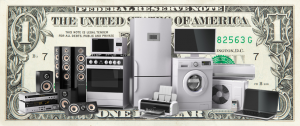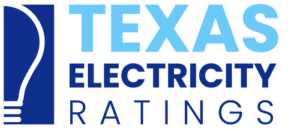
Cut Your Monthly Electricity Bill
Bill shock sucks. There’s nothing worse than getting to the end of your billing cycle only to find out that your Texas electricity bill is through the roof! Often, your appliances are the culprits. Knowing which ones use the most electricity while applying these energy-saving tips can help you avoid bill shock and reduce your electricity bills in Dallas.
5 Appliances That Use the Most Electricity in Your Home:
- HVAC (Heating/Cooling)
- Water Heater
- Washer
- Electric Dryer
- Refrigerator
Why Does HVAC Use So Much Electricity?
Figuring out how much the average HVAC system uses isn’t easy. Units of different sizes use more or less energy depending on the size of your home. Climate matters, too. Hot Texas summers mean that your AC unit will need to run longer to keep your home cool. Cold spells mean higher electricity bills, too.
“An average central ac will use 3000 to 5000 watts of power for around 9 hours a day during the hotter months,” according to Energy Use Calculator. That means during the summer, if you run your AC for 9 hours a day with an energy rate of 10 cents per kWh, you’ll pay $95.82 per month. That’s just to cool your home.
(If you know the exact specs of your A/C unit, you can calculate its energy use manually using this formula.)
Luckily, there are several steps you can take to reduce how much electricity your HVAC unit uses:
- Get a smart thermostat. If you don’t already have one, sign up for a smart thermostat energy plan. This will allow you to optimize your temperatures at certain times of the day and track how much energy your HVAC uses.
- Change your heating and cooling habits. You can save 10% on your annual energy bill by setting your thermostat 7°-10°F warmer for 8 hours a day. Raise the temperature higher when you’re away; keep it at 78°F when you’re home helps, too.
- Replace your furnace air filters often. Smoking and pet hair can clog filters, reducing your HVAC’s efficiency. (Check out this resource for help with cleaning and replacing your HVAC filters.)
How to Reduce Water Heater Electricity Use
Roughly 18% of the annual energy bill is from heating water. But figuring out how much hot water the average home uses is also tricky. In this study, they found that a home with 4 occupants uses around 63.1 gallons a day of hot water. That varied seasonally, however. (Must be those hot winter showers…).
Using those numbers, an average energy rate of 10 cents per kWh, and this energy calculator, you see that an electric water heater will cost you an average of $468 per year.
Most ways to reduce energy use with water heaters involve habit changes. Choose shorter showers over baths. Only use hot water in your washing machine for extremely dirty loads. And reducing your water heater temperature by 10ºF can save you 3-5% on your annual energy bills.
If you have an older water heater, you should consider insulating it. If it’s older than 10 years, consider purchasing a newer, more energy-efficient model. And for smaller homes, a tankless water heater can be 24 – 34% more energy efficient.
How Much Energy Does Your Washer Use?
The average American household does around 8 – 10 loads of laundry each week. That’s a lot of water and a lot of energy use. Most of the electricity used in a load of laundry goes to heating the water, around 80%. The rest goes to operating the machine.
An Energy Star rated washer uses around 500 Watts (other models use between 400 – 1300 watts). At 500 watts with an electricity rate of .10 cents per kilowatt-hour, it will cost you about .25 cents per load with an Energy Star washer. Multiply that by 416 – 512 (the average loads of laundry over the course of the year), and you get an operating cost of $104 – $128 per year.
The easiest way to save money on your electricity bill from washing clothes is to regularly use cold water. Save the hot water for only extremely dirty loads.
Purchasing an Energy Star washing machine can also reduce your energy bill. These washers use less water and less energy to run larger loads. Over the lifetime of your washer, it can save you around $350.
How Can I Save Electricity When Drying My Clothes?
Drying clothes uses a lot of electricity. Assuming your dryer uses 3.3 kWh to run one load for 45 minutes at 10 cents per kWh, it would cost around .33 cents per load. Over the course of the year, that adds up to $137. And that’s just for small loads.
The easiest way to save money drying your clothes is to air dry them. If you have space in your yard to set up a clothesline, that would work best. However, there are inside racks you can use to dry your clothes. And if you use the right techniques to air dry your clothes inside, it won’t take days either.
If that’s not an option, then there are a few dryer hacks you can use to make your dryer more energy-efficient without buying a new one. Don’t overload your dryer. Change loads when the dyer is still warm. Clean the lint filter often. Dry towels separately. And use dryer balls.
Why Do Refrigerators Use So Much Electricity?
Every house needs a refrigerator, and it needs to run constantly. Turning it off isn’t an option unless you want spoiled food. We did a deep dive into how much electricity your refrigerator uses. And using the Energy Star Calculator, we found that a 19 cubic foot fridge made between 2001 – 2010 uses around 651 kWh a year, costing around $78. A new fridge uses about $20 less in electricity each year.
If your refrigerator is older than 2001, then you should probably replace it. A new Energy Star fridge can save you about $300 over 5 years. But if your fridge isn’t that old, then there are a few energy-saving tips you can try instead:
- Never keep your refrigerator in the garage. Temperature fluctuations mean that your fridge will need to run longer to regulate the air. Keep it somewhere cool, instead.
- Clean your condenser coils once a year. Dust and grime and pile up on your condenser coils over time. Removing it can help increase your refrigerator’s energy efficiency.
- Check airflow. Without proper airflow, hot air stays trapped behind your fridge and prevents the condenser coils from cooling efficiently. Make sure there are a few inches of space behind your fridge so air can move freely.
- Clean your door seals. Grease, dust, and food can gunk up the seals of your refrigerator, giving cold air a chance to escape. Regular cleaning ensures an air-tight seal.
- Set your Fridge to the optimal temperature. Keep your refrigerator set to 36 – 38 degrees
One last note, your fridge habits can affect energy use, too. Keep regularly used items easily accessible. Pull out all the items you need when cooking at once. Let food cool down properly before storing it. And keep your fridge well-stocked. With more items in your fridge, it can better retain cooler temperatures every time you open the door.
Switch to a New Electricity Provider and Save!
Knowing which appliances are the energy hogs in your home is the first step to lowering your monthly electricity bills in Dallas. But if you want to get the cheapest electric rates in Texas, you need the best electricity plan for your home. How do you find the best plan? By taking advantage of the deregulated electricity market in Texas and comparing energy providers.
With the power to choose, you get to compare and switch to the cheapest electricity plan in Dallas. But there are a lot of options out there, over 100. You need to be careful if you want to avoid picking the wrong energy plan. To keep that from happening, go to www.texaselectricityratings.com and get the help you need to find the right plan for your home. And start saving today!
